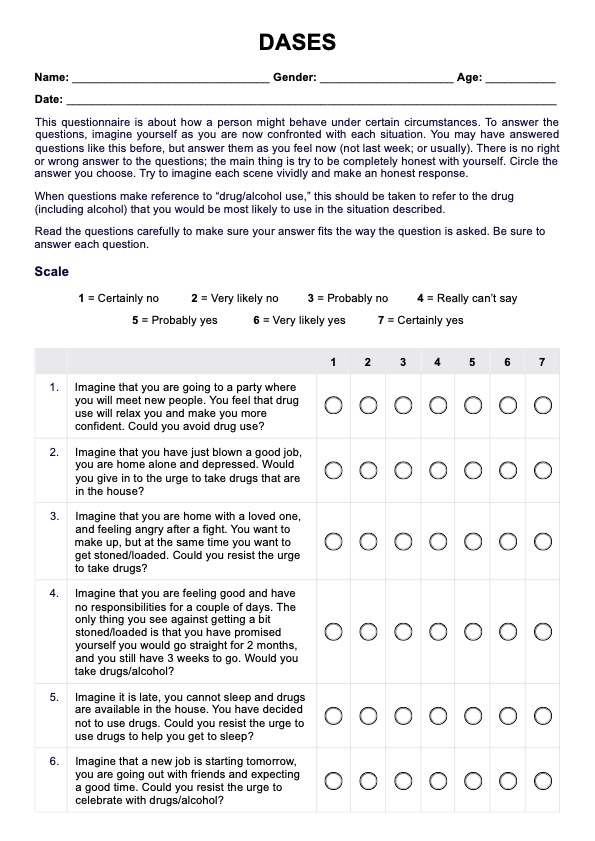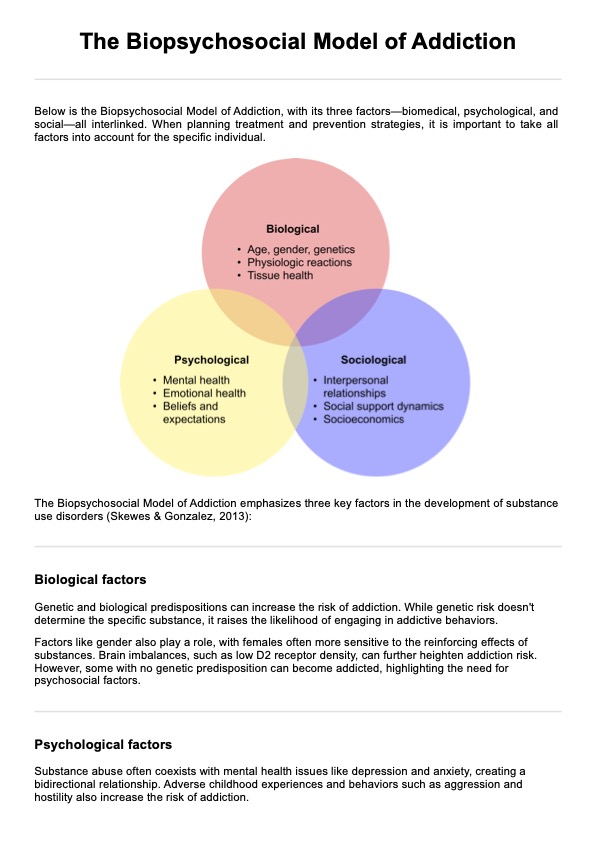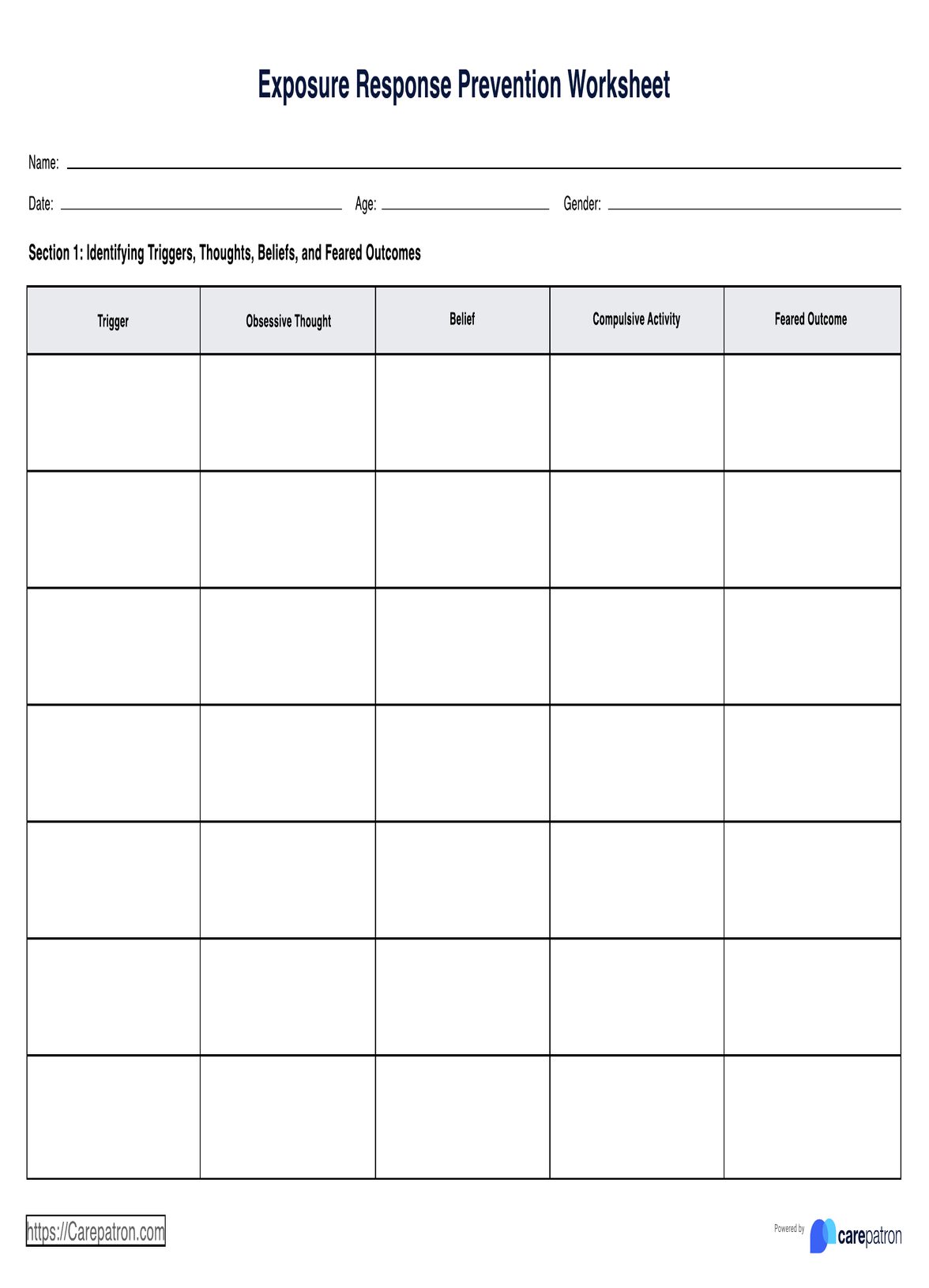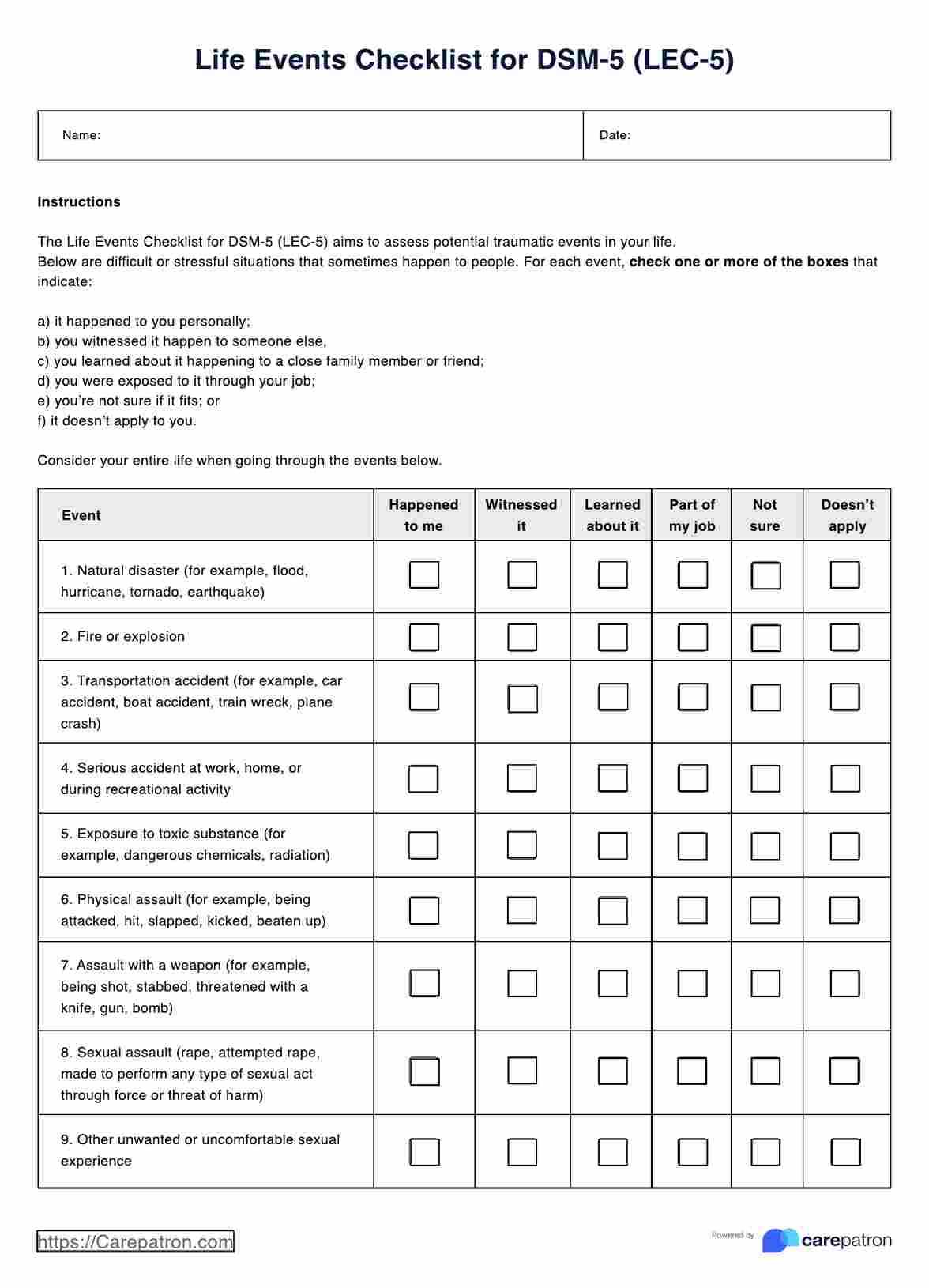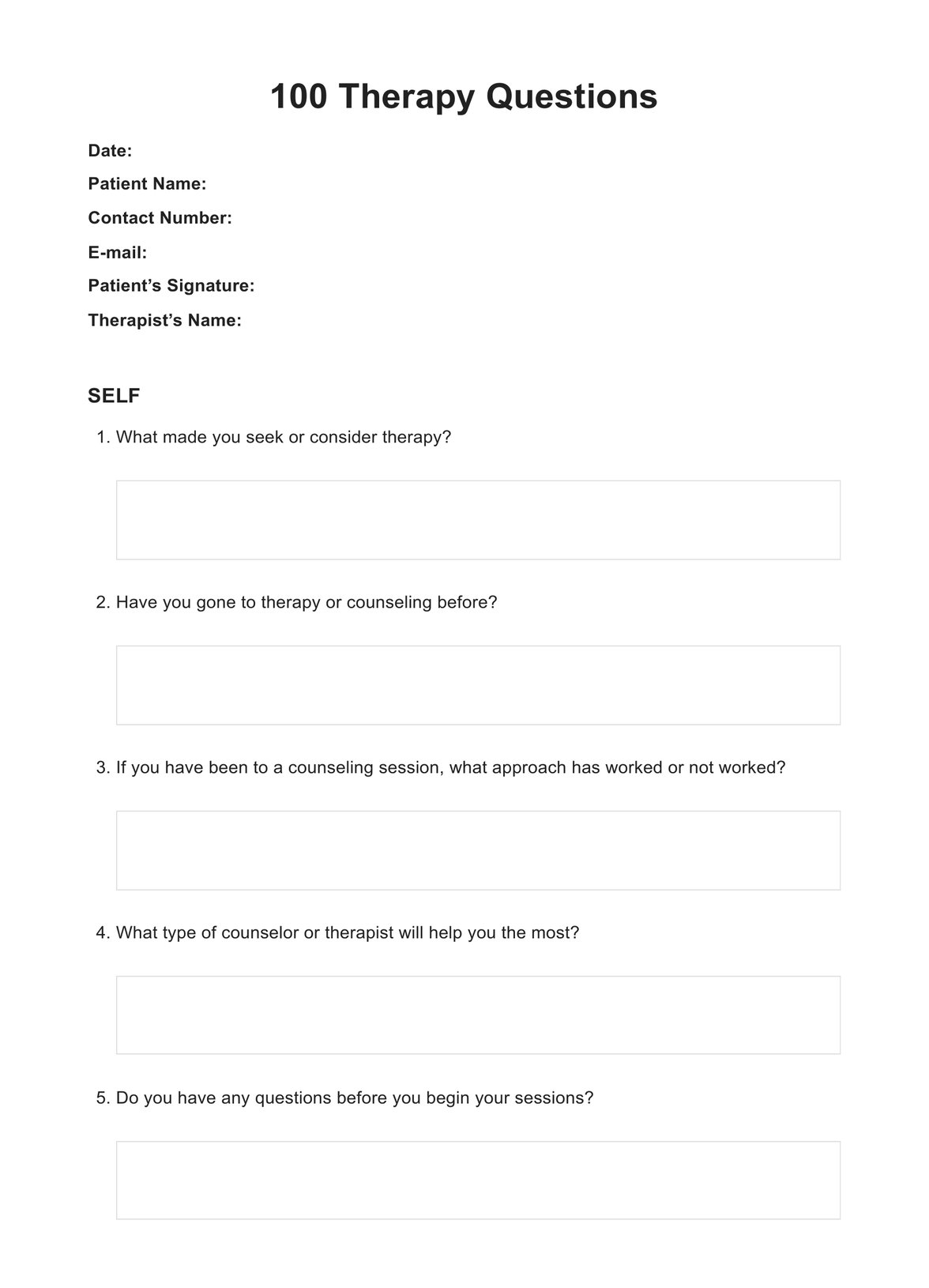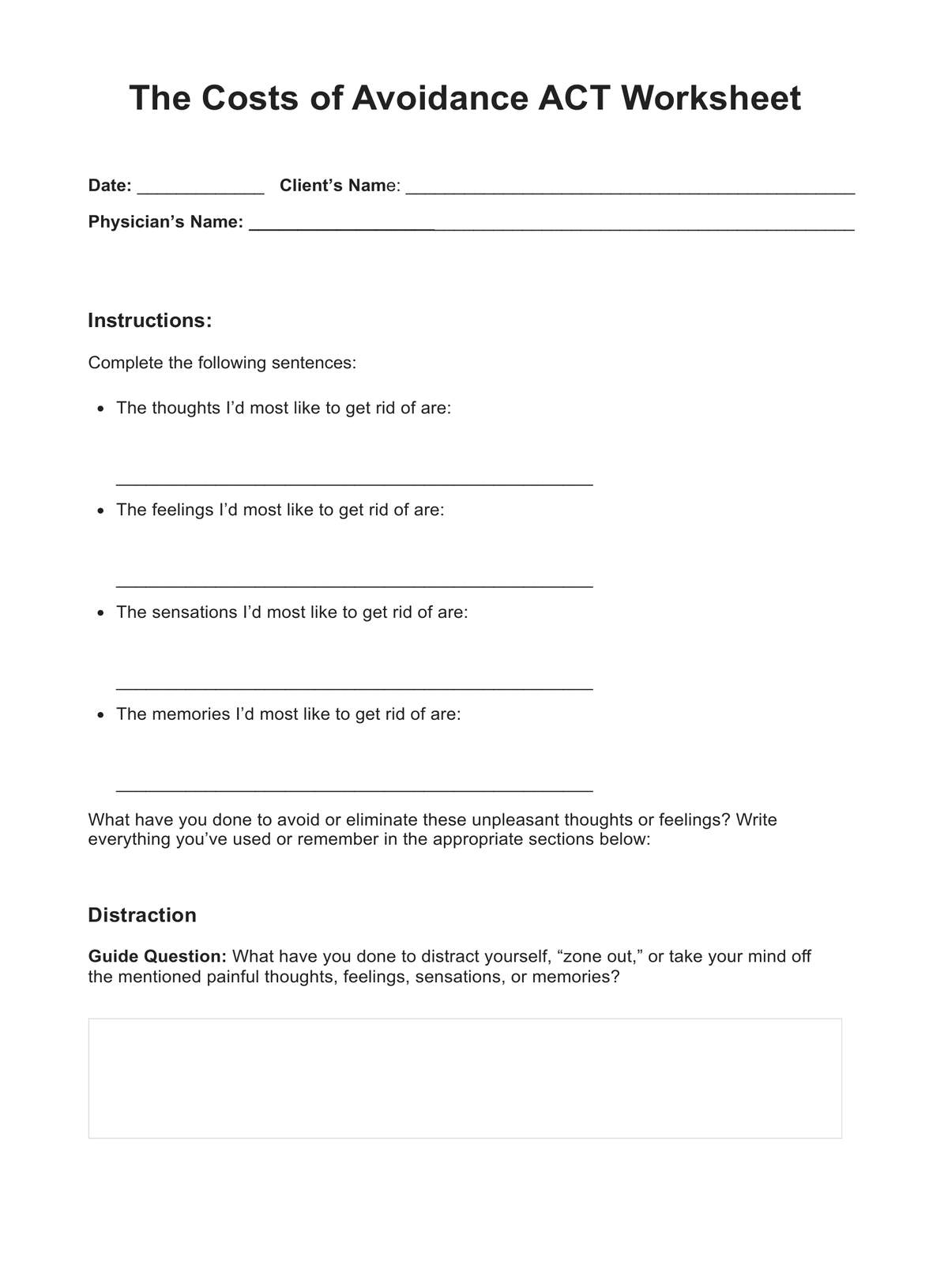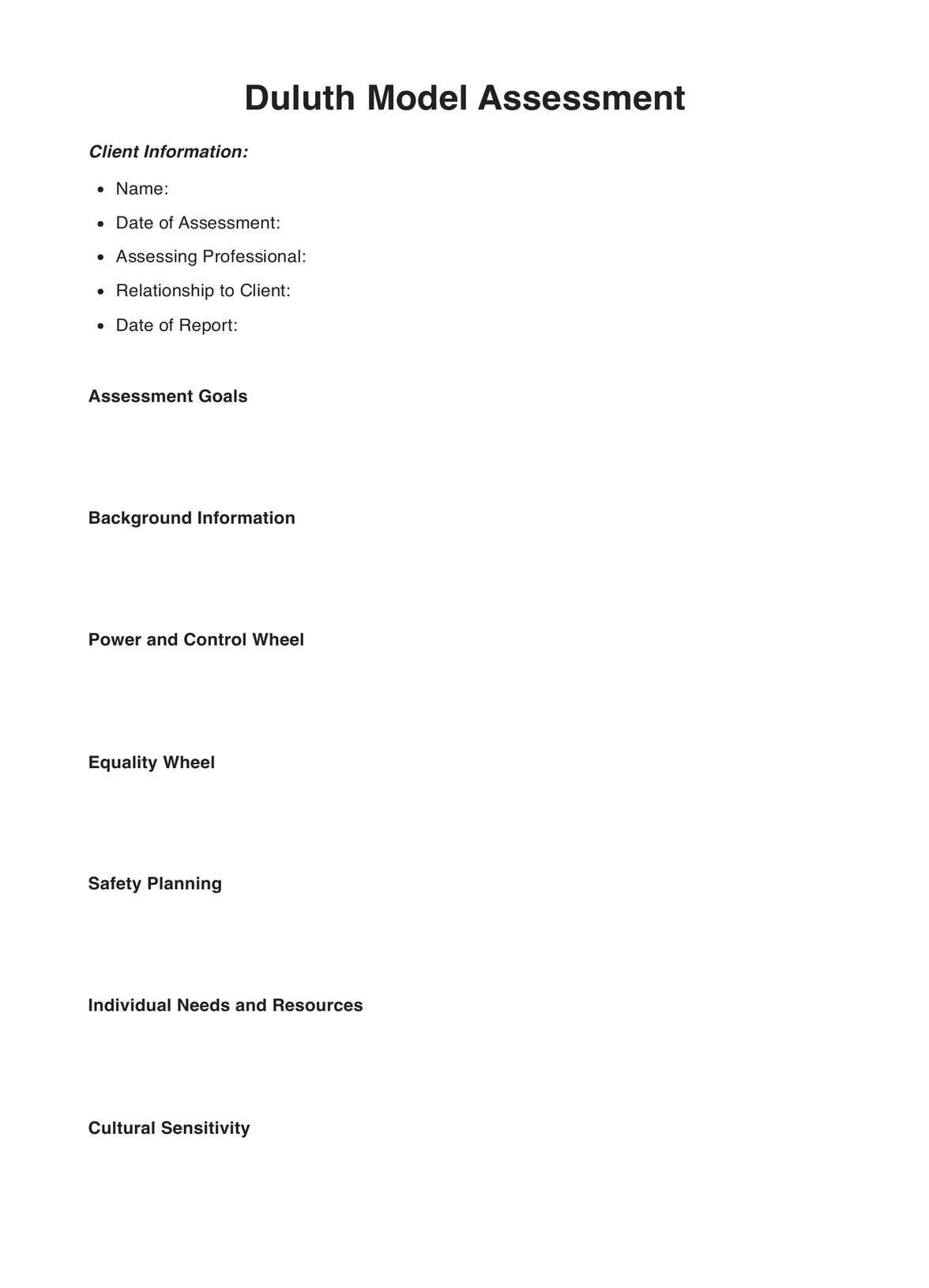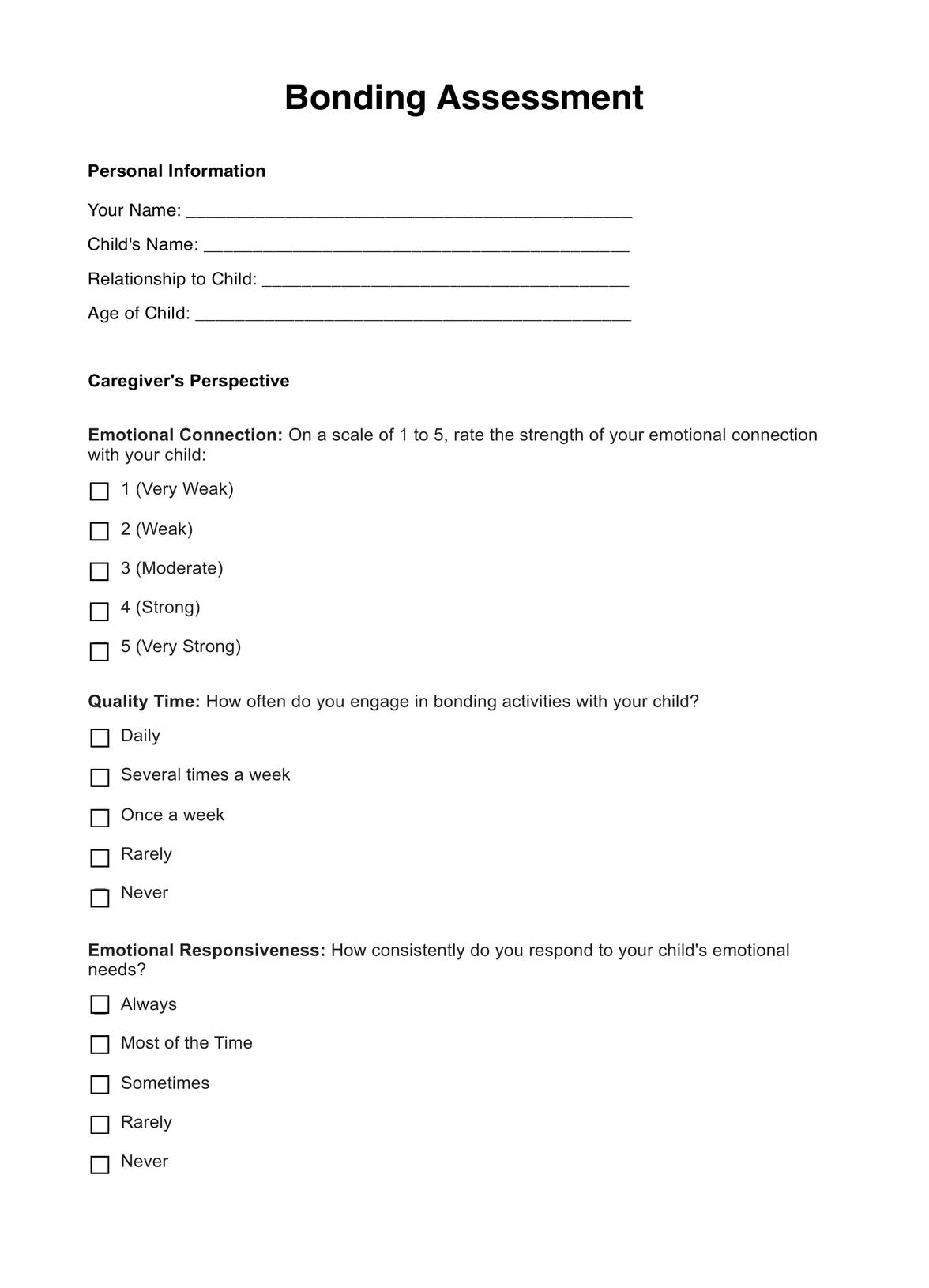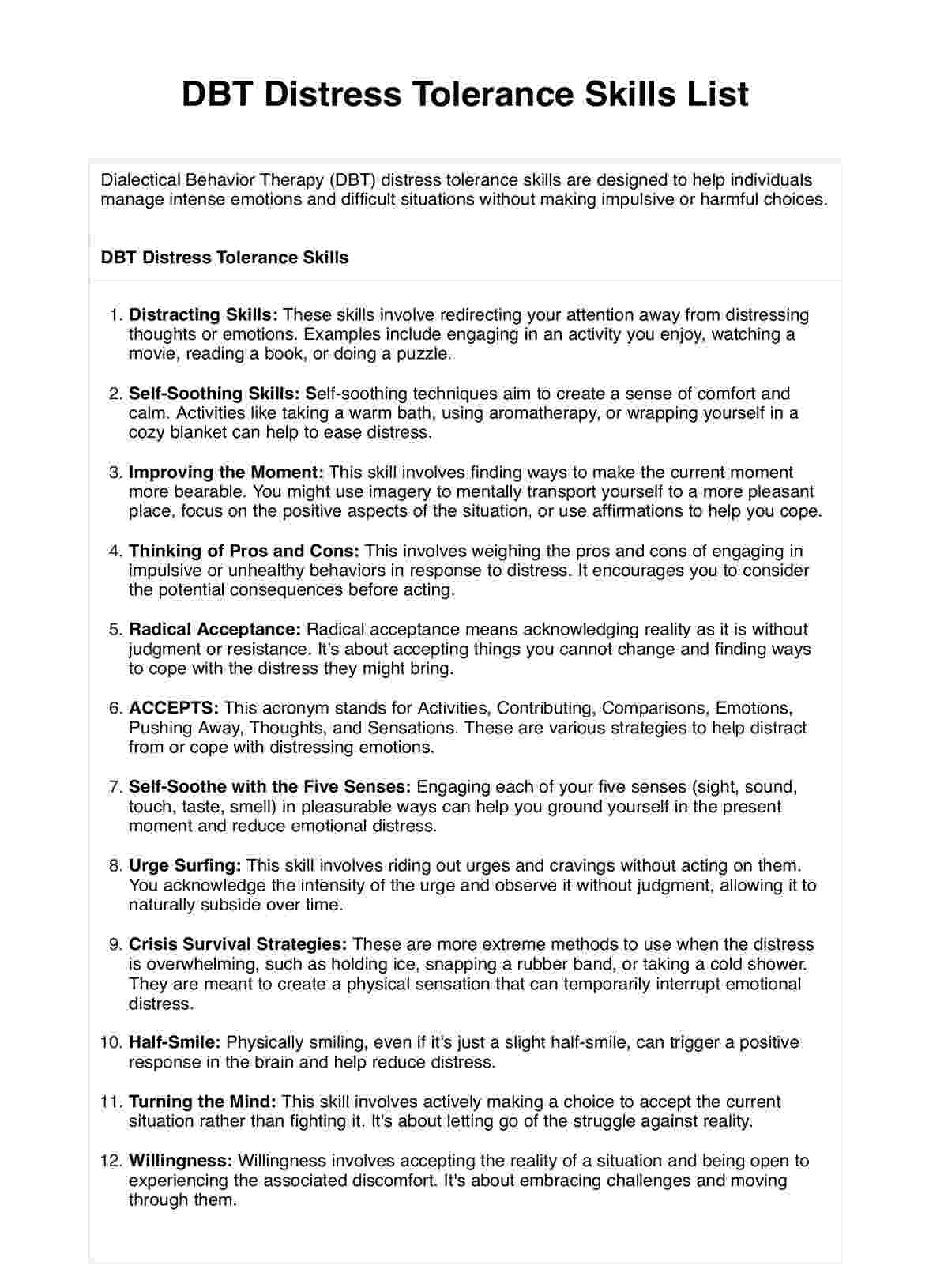Schizophrenia System Disorder
Unlock insights into managing Schizophrenia System Disorder with comprehensive healthcare resources and support for individuals and their families.


What is a Schizophrenia System Disorder Template?
The Schizophrenia System Disorder Template is a dynamic and user-friendly resource designed to streamline the management of schizophrenia within healthcare practices. This template is a comprehensive guide for healthcare practitioners, offering a structured approach to assessment, diagnosis, and treatment planning.
Inclusive and adaptable, the template encourages collaboration among healthcare teams, ensuring a holistic understanding of the patient's needs. It provides a clear framework for documenting symptoms, tracking progress, and adjusting interventions as necessary. The template focuses on plain language and facilitates effective communication between practitioners, patients, and their support networks.
The resource is engaging and informative, and it incorporates the latest evidence-based practices, equipping healthcare professionals with up-to-date information on emerging treatments and therapeutic approaches. The structured format minimizes documentation time, allowing practitioners to focus more on personalized patient care.
Upbeat and inspirational, the Schizophrenia System Disorder Template fosters a positive outlook on managing this complex condition. It empowers healthcare practitioners to make informed decisions while fostering a sense of optimism for patients on their recovery journey. By adhering to American English standards and avoiding unnecessary complexity, this resource embodies clarity and accessibility.
In essence, the Schizophrenia System Disorder Template is a valuable tool that promotes efficiency, collaboration, and patient-centered care in the ever-evolving landscape of mental health.
Schizophrenia System Disorder Template
Schizophrenia System Disorder Example
How does it work?
The Printable Schizophrenia System Disorder Template is designed to streamline the process of assessing and managing individuals with schizophrenia within healthcare practices. The user-friendly nature of this form ensures that healthcare practitioners can efficiently gather essential information and collaborate effectively with their multidisciplinary teams.
Step 1: Patient information
Begin by filling in the patient's basic details, including their name, date of birth, contact information, and emergency contact. This section provides a quick reference for essential identification and communication.
Step 2: Medical history
Document the patient's medical history, including any previous diagnoses, current medications, allergies, and substance use. This comprehensive overview sets the stage for understanding the individual's health background.
Step 3: Symptom assessment
Evaluate the presenting symptoms of the patient, utilizing the severity scale to gauge the impact on their daily life. This step allows practitioners to pinpoint specific challenges and tailor interventions accordingly.
Step 4: Functional assessment
Assess the patient's daily living skills, occupational functioning, social relationships, and self-care abilities. This holistic view aids in identifying areas that may require targeted support and intervention.
Step 5: Treatment history
Document the patient's past therapies, medication history, response to treatment, and medication adherence. Understanding the treatment journey provides insights into what has and has not worked in the past.
Step 6: Collaborative care plan
Identify the members of the multidisciplinary team involved in the patient's care. This step fosters communication and coordination among healthcare professionals to ensure a cohesive approach to treatment.
Step 7: Goals and objectives
Establish both short-term and long-term goals for the patient. These goals serve as benchmarks for progress and guide the development of intervention strategies.
Step 8: Intervention strategies
Detail the specific interventions planned, including pharmacological approaches, psychoeducation, cognitive-behavioral therapy, and supportive counseling. This section outlines the actionable steps to address the patient's needs.
Step 9: Monitoring and evaluation
Outline a schedule for regular follow-ups, identify outcome measurement tools, and emphasize the importance of patient feedback. This step ensures ongoing assessment and adjustment of the treatment plan based on observed progress.
Step 10: Patient and family education
Provide resources and information on schizophrenia, coping strategies, crisis management, and support resources. Empowering the patient and their family with knowledge enhances their ability to participate actively in the treatment process.
Step 11: Empowerment and recovery
Emphasize the strengths-based approach, collaborative goal-setting, celebration of progress, and encouragement of self-advocacy. These elements reinforce a positive and empowering environment for the patient on their journey to recovery.
By following these systematic steps, healthcare practitioners can effectively utilize the Printable Schizophrenia System Disorder Template, promoting a comprehensive and patient-centric approach to the assessment and management of schizophrenia.
When would you use this template?
The Schizophrenia System Disorder Template proves invaluable for a range of healthcare practitioners involved in the assessment and management of individuals with schizophrenia. Psychiatrists, psychologists, social workers, and care coordinators can effectively employ this resource during various stages of patient care.
Diagnosis and assessment
During the initial diagnosis phase, psychiatrists can utilize the template to comprehensively assess the patient's symptoms, allowing for a nuanced understanding of their condition. Psychologists can integrate the form into their assessment tools, providing a structured framework for evaluating cognitive and emotional aspects. Social workers can use the template to identify functional impairments and develop a holistic view of the patient's needs.
Treatment planning
The template becomes instrumental in collaborative care planning, bringing together healthcare professionals from different disciplines. With input from the entire multidisciplinary team, the document aids in formulating tailored intervention strategies, including pharmacological approaches, psychoeducation, and counseling. Care coordinators can utilize the template to ensure a cohesive and coordinated approach to treatment.
Monitoring and adjustments
Regular follow-ups and monitoring of patient progress are crucial aspects of schizophrenia management. The template's structured format facilitates the ongoing evaluation of treatment effectiveness. Psychiatrists can adjust medication regimens based on documented responses, while psychologists can refine therapeutic approaches. Social workers can use the template to track improvements in daily living skills and social relationships, adapting support as needed.
Communication and collaboration
The template serves as a central communication tool among healthcare practitioners. It ensures that each team member is informed about the patient's history, ongoing treatment plan, and goals. This fosters collaboration and enhances the quality of care delivered to individuals with schizophrenia.
Patient and family engagement
Involving patients and their families in the treatment process is crucial. The template is an educational tool, providing information on the condition, coping strategies, and support resources. This promotes active engagement and empowers patients and their families to be partners in the recovery journey.
The Schizophrenia System Disorder Template is a versatile resource that can be seamlessly integrated into the workflow of various practitioners involved in the care of individuals with schizophrenia. From diagnosis to ongoing management, this template enhances communication, collaboration, and patient-centered care, improving outcomes and a more holistic approach to mental health treatment.
What do the results mean?
Interpreting the results obtained from the Free Schizophrenia System Disorder Template is crucial for healthcare practitioners seeking to understand the nuanced aspects of an individual's condition. This comprehensive template generates valuable insights across various domains, helping professionals make informed decisions about diagnosis, treatment planning, and ongoing care.
Symptom assessment
Common results in the symptom assessment section may reveal the presence and severity of hallucinations, delusions, disorganized thinking, negative symptoms, and cognitive impairment. A higher severity may indicate a greater impact on daily functioning, necessitating more intensive interventions. Practitioners should pay attention to specific symptoms to tailor treatment strategies effectively.
Functional assessment
Results in the functional assessment section shed light on the patient's daily living skills, occupational functioning, social relationships, and self-care abilities. Impairments in these areas may signify the need for targeted support and intervention. Understanding the functional implications of schizophrenia is crucial for developing a holistic care plan that addresses both symptoms and daily functioning.
Treatment history
Documented treatment history results provide insights into the patient's response to previous therapies and medication regimens. This information is vital for understanding what has and hasn't worked in the past, guiding practitioners in selecting appropriate interventions. It also helps assess medication adherence, a critical factor in long-term symptom management.
Collaborative care plan
The collaborative care plan section outlines the multidisciplinary team involved in the patient's care. Results here depict the level of coordination among healthcare professionals, emphasizing the importance of a team-based approach to schizophrenia management.
Goals and objectives
Establishing short-term and long-term goals is a key outcome of the template. Achievable goals contribute to a sense of progress and motivation for the patient. Results should be regularly reviewed and adjusted to align with the patient's evolving needs and treatment response.
Intervention strategies
Detailed intervention strategies provide actionable insights, including pharmacological approaches, psychoeducation, and counseling. Practitioners can interpret these results to ensure a well-rounded and tailored approach to address the patient's unique challenges.
The results derived from the Free Schizophrenia System Disorder Template offer a comprehensive snapshot of the patient's condition, treatment history, and collaborative care plan. Analyzing these results allows healthcare practitioners to make informed decisions, tailor interventions to individual needs, and track progress effectively, ultimately contributing to a more personalized and patient-centered approach to schizophrenia management.
Implementing this care plan template can improve your practice and client success. This resource can help clients create actionable plans for improvement.
Research & evidence
The Schizophrenia System Disorder Template has evolved in response to the growing understanding of schizophrenia and the need for a structured, holistic approach to its management. Research in the field has consistently emphasized the importance of collaborative and multidisciplinary care for individuals with schizophrenia.
One seminal work supporting the collaborative care model is the study by Dixon et al. (2000) This landmark trial highlighted the significance of involving various healthcare professionals in the treatment process, contributing to the foundation of collaborative care plans.
Furthermore, the template's emphasis on goal-setting and patient-centered care aligns with recovery-oriented practices outlined in the Substance Abuse and Mental Health Services Administration (SAMHSA) guidelines (SAMHSA, 2012). SAMHSA underscores the importance of empowering individuals with mental health disorders to actively participate in their recovery journey, a principle embedded in the template's design.
The evidence supporting the template's structured assessment and monitoring aspects draws from studies like NICE guidelines for psychosis and schizophrenia in adults (National Institute for Health and Care Excellence, 2014). These guidelines advocate for regular assessment and monitoring of symptoms, functioning, and treatment response, providing a robust foundation for the template's structure.
The Schizophrenia System Disorder Template has been shaped by a rich history of research and evidence in the field of schizophrenia management. It integrates best practices from seminal studies and authoritative guidelines, ensuring healthcare practitioners have a valuable, evidence-based tool to guide their collaborative, patient-centered approach to schizophrenia care.
References
Dixon, L., et al. (2000). A Randomized Trial of Clozapine versus Typical Neuroleptics in Severe Chronic Schizophrenia. American Journal of Psychiatry, 157(4), 620–627.
National Institute for Health and Care Excellence. (2014). Psychosis and Schizophrenia in Adults: Prevention and Management. NICE Clinical Guideline CG178.
Substance Abuse and Mental Health Services Administration. (2012). SAMHSA's Working Definition of Recovery. Retrieved from https://store.samhsa.gov/sites/default/files/d7/priv/pep12-recdef.pdf
American Psychiatric Association. (2020). Practice Guideline for the Treatment of Patients with Schizophrenia. American Journal of Psychiatry, 177(9), 868-872. doi: 10.1176/appi.ajp.2020.177901.
Commonly asked questions
Symptoms may include hallucinations, delusions, disorganized thinking, negative symptoms (such as social withdrawal), and cognitive impairment.
Diagnosis involves a comprehensive assessment by mental health professionals, considering symptomatology, medical history, and functional impairments.
Treatment often includes a combination of antipsychotic medications, psychotherapy, and support services tailored to the individual's needs.


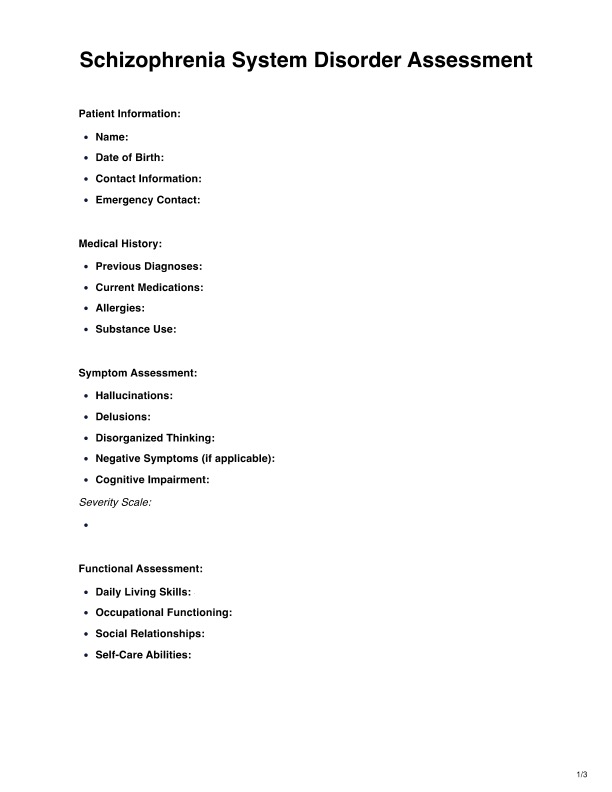
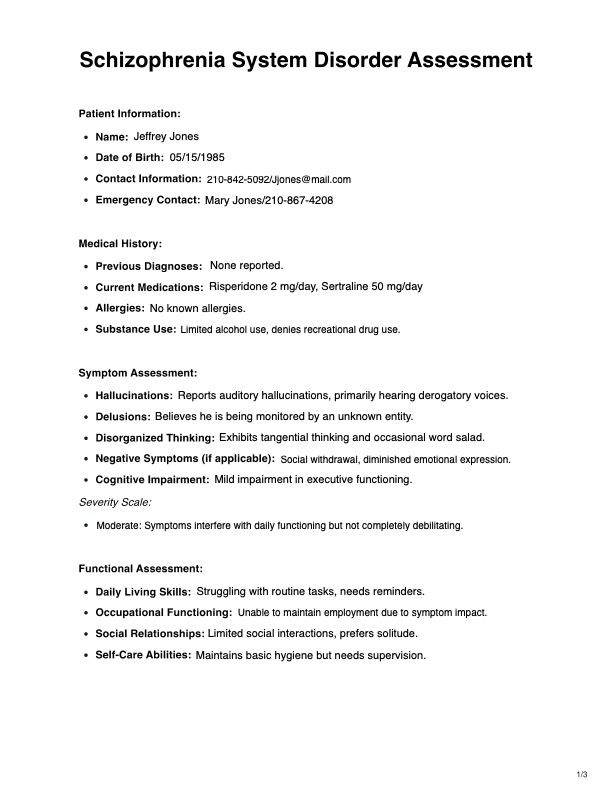

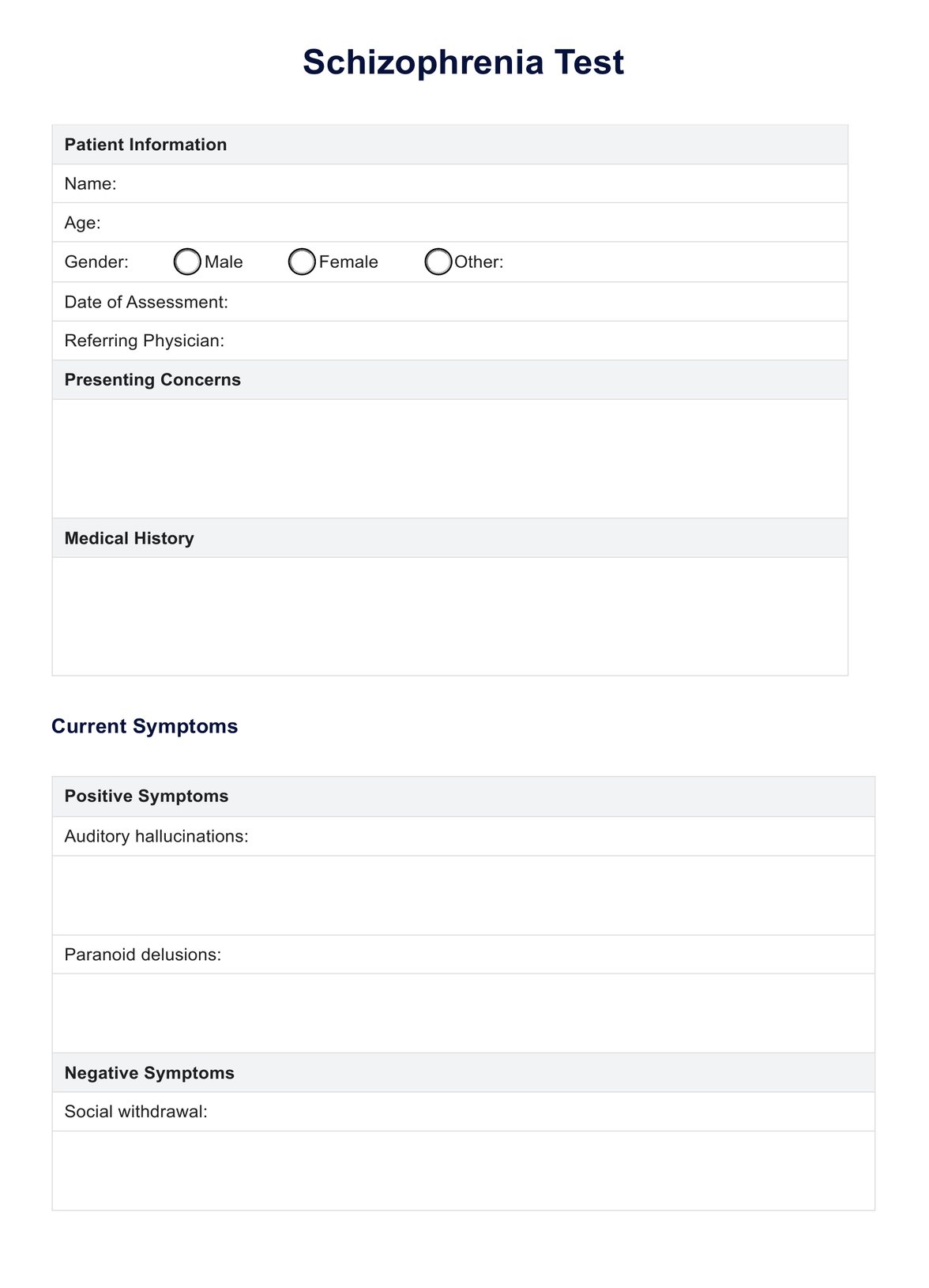
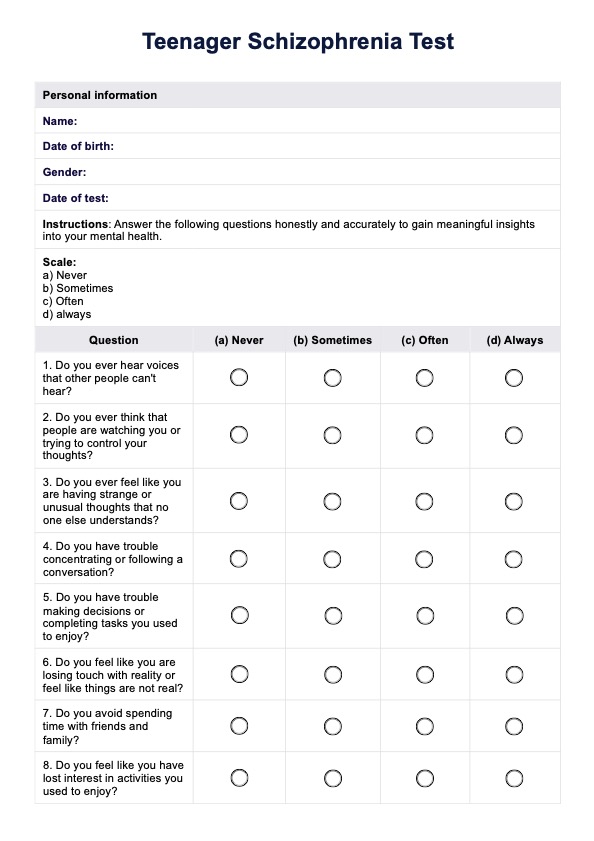

















-template.jpg)


